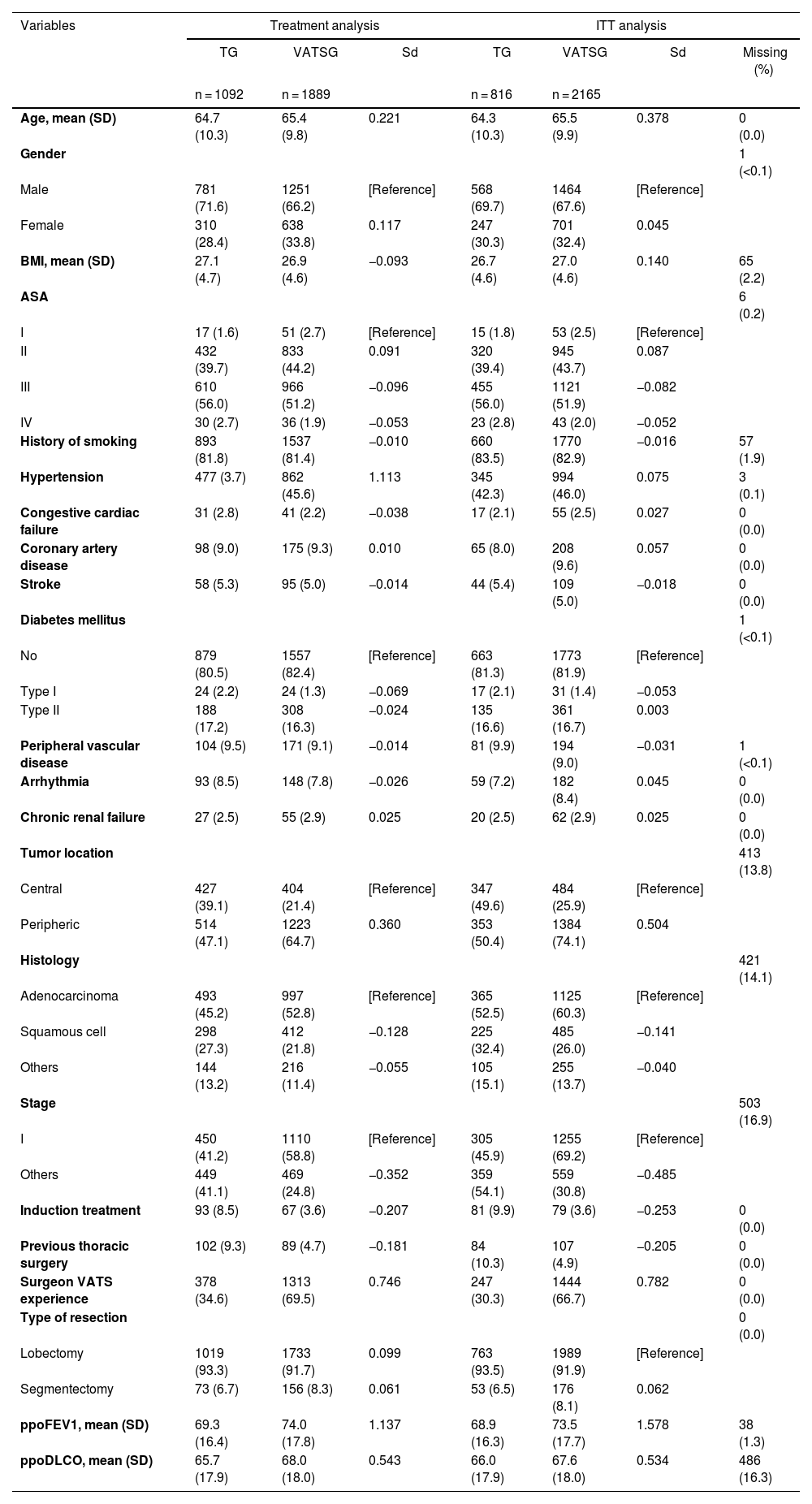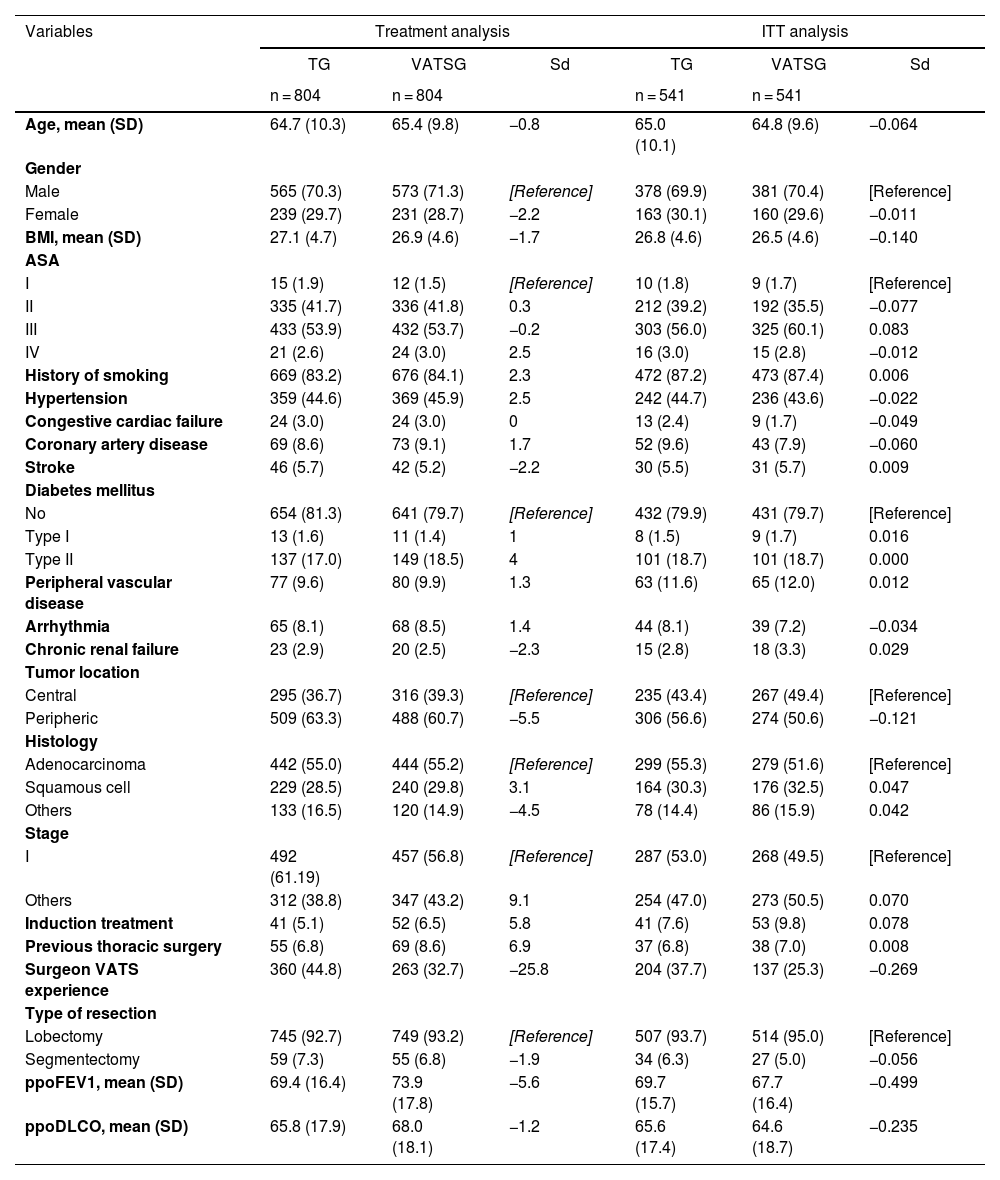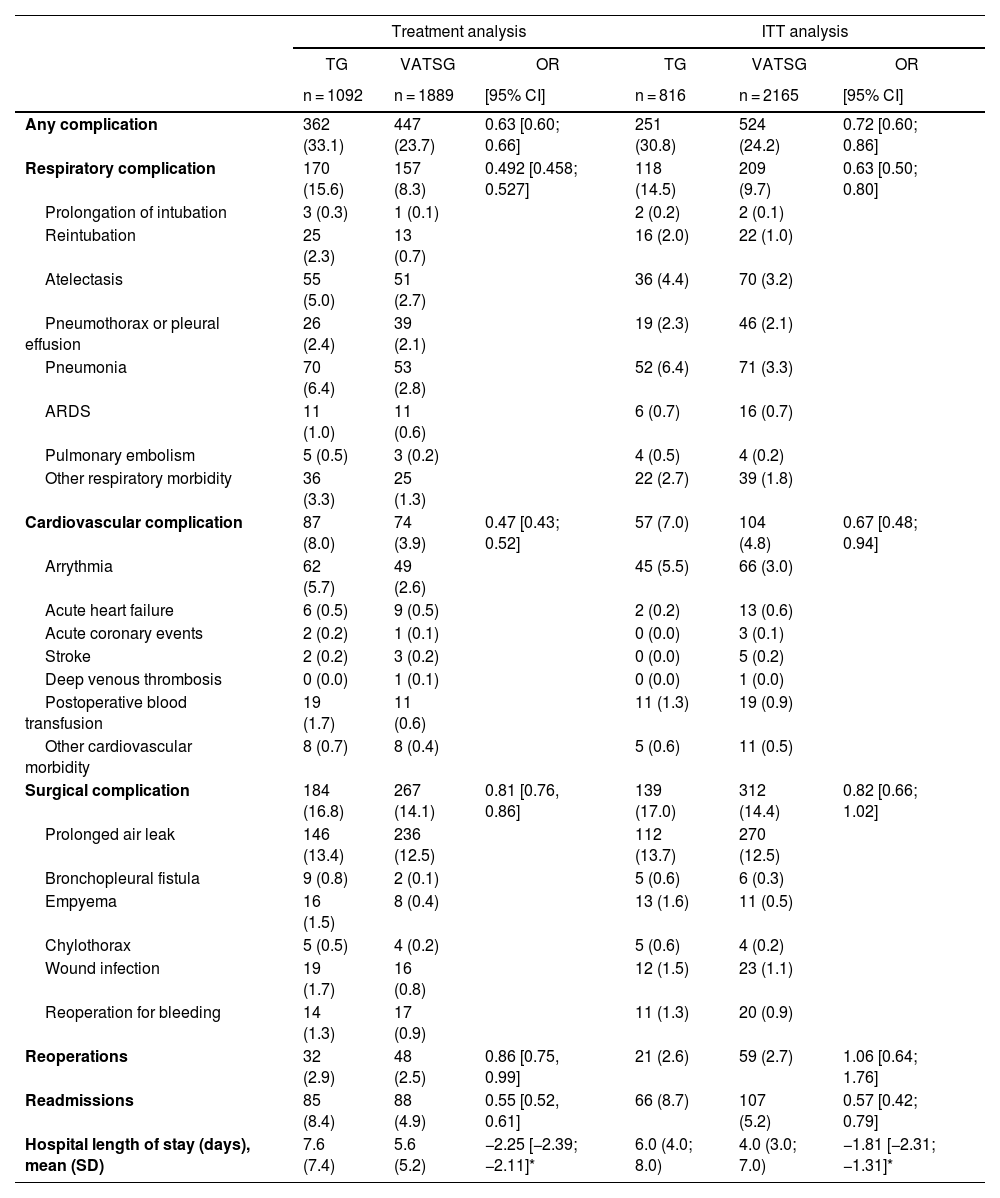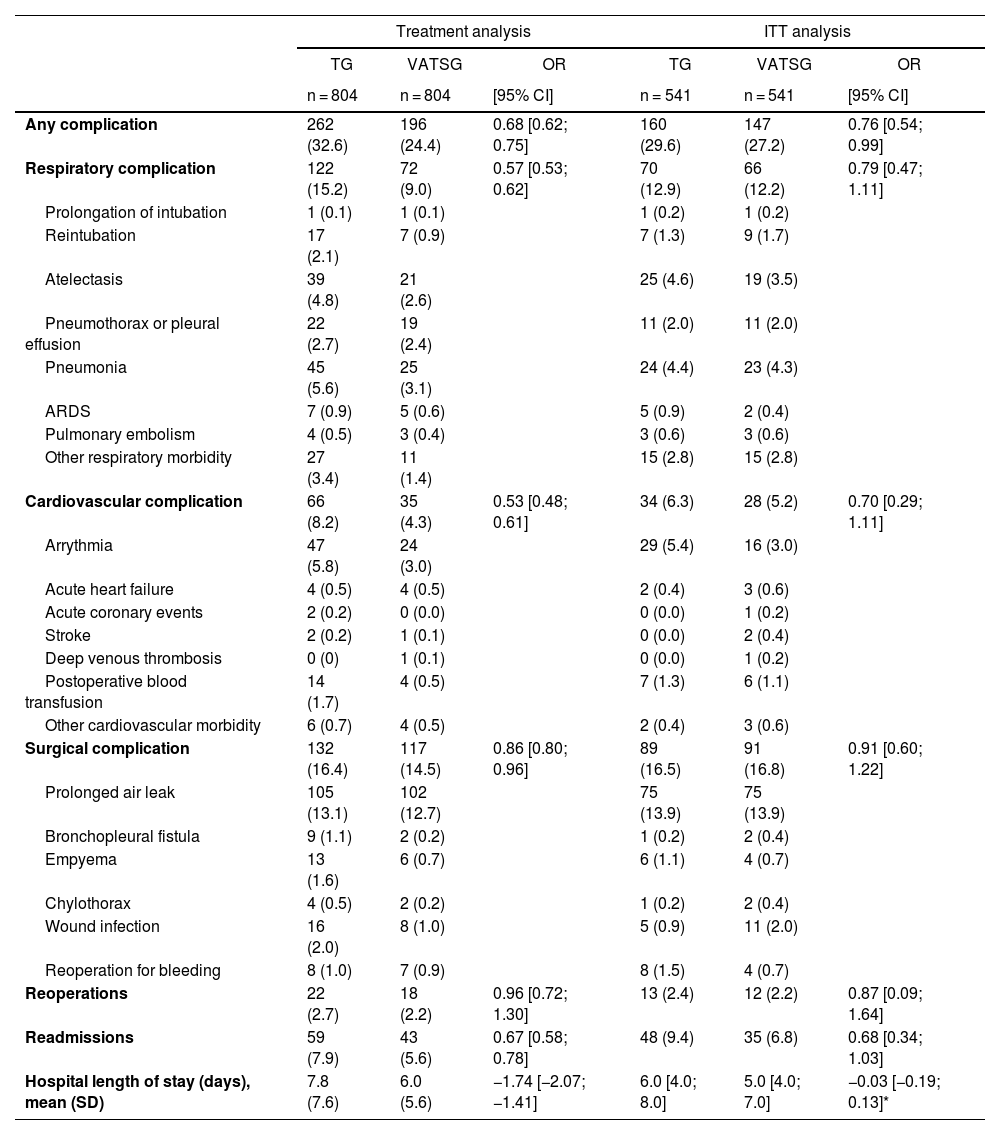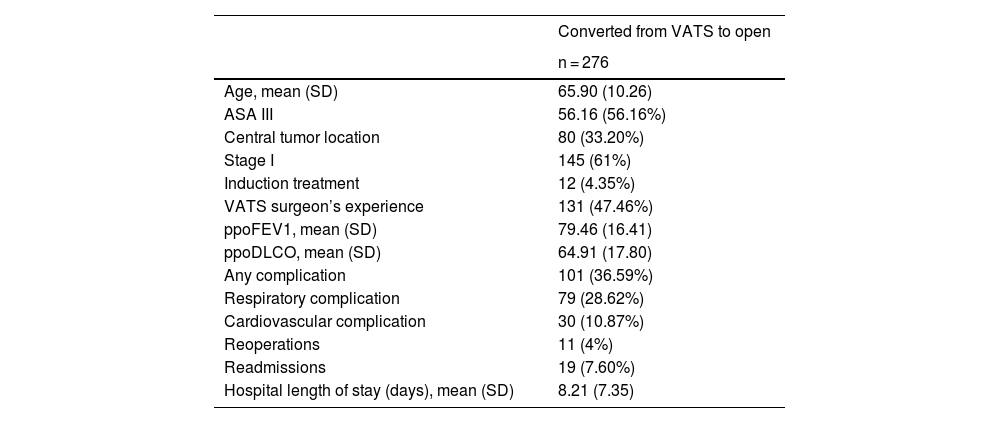In recent years, video-assisted thoracoscopic lung resections (VATS) have been associated with lower morbidity than open surgery. The aim of our study is to compare postoperative morbidity among patients from the national database of the Spanish Group of Video-Assisted Thoracic Surgery (GE-VATS) after open and video-assisted anatomic lung resections using a propensity score analysis.
MethodsFrom December 2016 to March 2018, a total of 3533 patients underwent anatomical lung resection at 33 centers. Pneumonectomies and extended resections were excluded. A propensity score analysis was performed to compare the morbidity of the thoracotomy group (TG) vs the VATS group (VATSG). Treatment and intention-to-treat (ITT) analyses were conducted.
ResultsIn total, 2981 patients were finally included in the study: 1092 (37%) in the TG and 1889 (63%) in the VATSG for the treatment analysis; and 816 (27.4%) in the TG and 2165 patients (72.6%) in the VATSG for the ITT analysis. After propensity score matching, in the treatment analysis, the VATSG was significantly associated with fewer overall complications than the TG OR 0.680 [95%CI 0.616, 0.750]), fewer respiratory (OR 0.571 [0.529, 0.616]) cardiovascular (OR 0.529 [0.478, 0.609]) and surgical (OR 0.875 [0.802, 0.955]) complications, lower readmission rate (OR 0.669 [0.578, 0.775]) and a reduction of hospital length of stay (−1.741 ([−2.073, −1.410]). Intention-to-treat analysis showed only statistically significant differences in overall complications (OR 0.76 [0.54–0.99]) in favor of the VATSG.
ConclusionIn this multicenter population, VATS anatomical lung resections have been associated with lower morbidity than those performed by thoracotomy. However, when an intention-to-treat analysis was performed, the benefits of the VATS approach were less prominent.
El objetivo de nuestro estudio es comparar la morbilidad postoperatoria entre los pacientes de la base de datos nacional del Grupo Español de Cirugia Torácica Videoasistida (GE-VATS) después de resecciones pulmonares anatómicas abiertas y videoasistidas mediante un análisis de emparejamiento por índice de propensión.
MétodosDesde Diciembre de 2016 hasta Marzo de 2018, un total 3533 pacientes fueron intervenidos de resección pulmonar anatómica en 33 centros. Se excluyeron las neumonectomías y las resecciones extendidas. Se realizó un análisis de índice de propensión para comparar la morbilidad de cirugía abierta (TG) frente a VATS (VATSG). Se realizó un análisis por tratamiento y por intención de tratar (ITT).
ResultadosEn el estudio se incluyeron finalmente 2981 pacientes: 1092 (37%) en TG y 1889 (63%) en VATSG. En el análisis por tratamiento, la VATS se asoció significativamente con menor tasa de complicaciones que la cirugía abierta (OR 0.680 [95%CI 0.616, 0.750]), de complicaciones respiratorias (OR 0.571 [0.529, 0.616]), cardiovasculares (OR 0.529 [0.478, 0.609]) y quirúrgicas (OR 0.875 [0.802, 0.955]), menor tasa de reingresos (OR 0.669 [0.578, 0.775]) y menor estancia (−1.741 ([−2.073, −1.410]). En el de intención de tratar, se observaron diferencias estadísticamente significativas a favor de la VATS solo en las complicaciones en general (OR 0.76 [0.54–0.99]).
ConclusionesEn esta población multicéntrica, las lobectomías y segmentectomias anatómicas por VATS se han asociado con menor tasa de complicaciones que las realizadas por toracotomía. Sin embargo, en el análisis por intención de tratar, los beneficios de la VATS no fueron tan evidentes.







